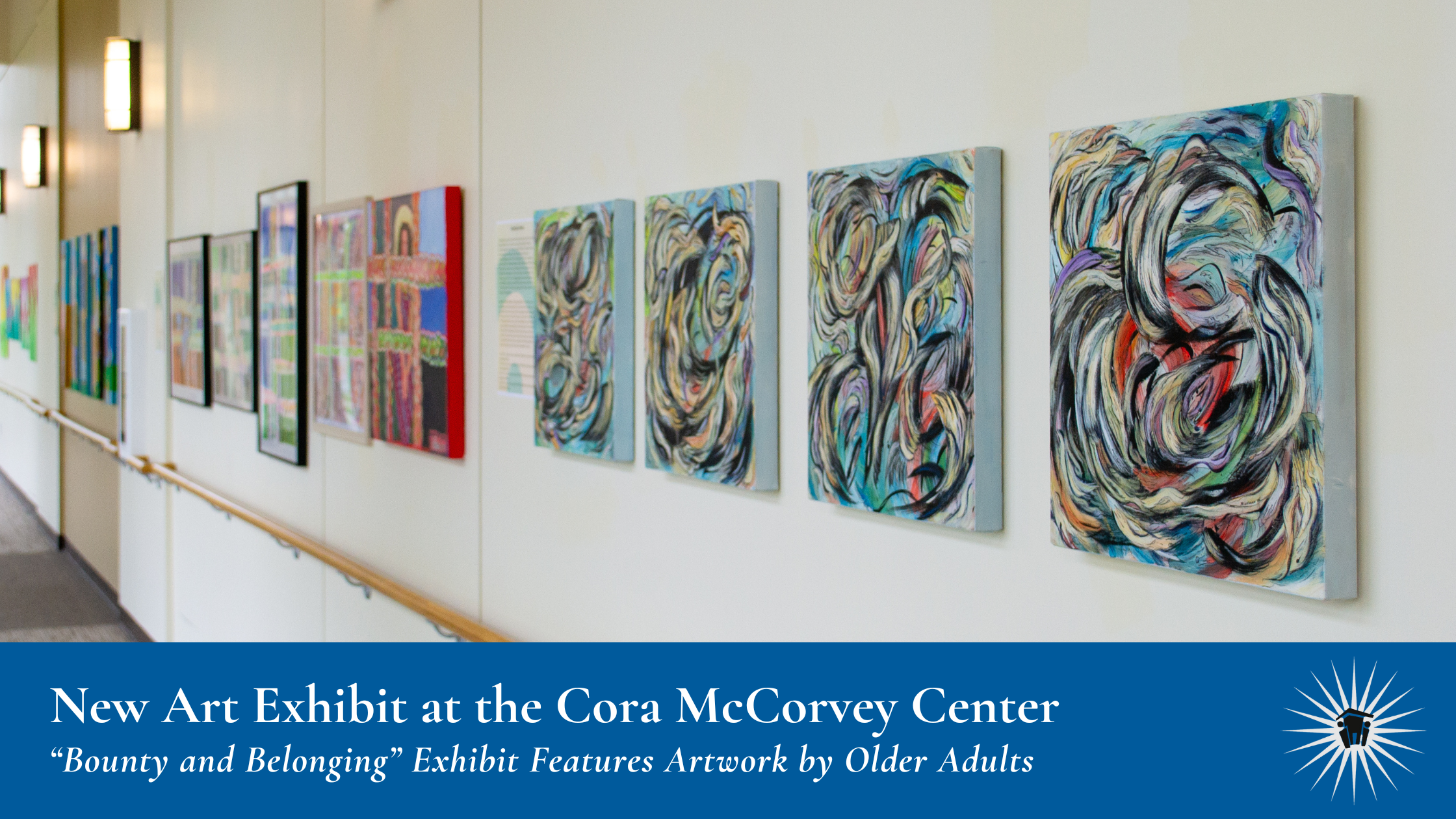Last month, the Cora McCorvey Health and Wellness Center (CMHWC) kicked off its newest art exhibition, “Bounty and Belonging: The Art of Abundance.” This exhibit features more than 100 original artworks by 30 artists over the age of 50. With the CMHWC serving older adults, the artists featured reflect the individuals using the center’s services.
The exhibition explores themes of generosity, connection, and shared humanity through a wide range of artistic mediums, including painting, photography, fiber, and mixed media. Each piece reflects a unique perspective on what it means to give, receive, and belong.
Here are some of the featured artists on display at the CMHWC now through early November:
Macro photographer Rich Howard has a series of insect photos on display. These images of pollen-covered honeybees, leafcutter bees, and Minnesota flower flies were all captured in his backyard pollinator garden.
“All my life, I have had a restless creative spirit,” said Rich Howard. “I do not need inspiration; I just need to do the work. To put it another way, the inspiration for my art could be anything, at any time.”
Tanya Beyer’s two works on display incorporate watercolors, wet and dry colored pencil, and gouache. Tanya finds inspiration in the natural world with the belief that all creatures on earth are one community and all belong.
“The paintings both reflect the peace and fulfillment of finding oneself safely in a good home,” said Tanya Beyer. “That presence adds up to bounty and belonging, I feel.”
Artist Shakuntala Maheshwari used several techniques—block printing, batik-style, monoprinting, and more—to create her acrylic paintings in the exhibition. Inspired by cultural traditions, nature, and everyday moments, Shakuntala often uses symbols of growth, resilience, and shared human experience—like the lotus, dance, and trees.
“My artwork reflects bounty and belonging through cultural abundance, resilience, and connection,” said Shakuntala Maheshwari. “Each pieces explore the richness of culture and creative expression, emphasizing that belonging is not just about inclusion but thriving through shared experiences and traditions. By blending tradition with personal storytelling, my work invites viewers to reflect on the abundance found in our connections to one another and the world around us.”
Eric Zuccola’s five works on display are mixed-media collages. The works include found images from old and new print publications, card stock, and occasionally the use of pencil, ink, charcoal, acrylic, and watercolor.
“The concept of abundance is often represented in art through the depiction of food,” said Eric Zuccola. “The abundance of food can help suggest concepts of prosperity, hospitality, pleasure, cultural identity, and nourishment. In my work, I will sometimes take food items out of their traditional contexts and place them in surreal or discordant environments. It is my hope that the abundance in number or size of the food items in my pieces will provoke the viewer to reconsider what those food items could or should ultimately signify.”
Painter Diane Weinerman first got inspired by in her forties. Mostly self-taught, Diane has been painting for decades. Her art on display centers the idea that we all have communities we belong to, allowing us to feel safe and have fun.
“I love color and design, and my artwork exemplifies that,” said Diane Weinerman. “I use watercolors and paint several layers on each area to get bright colors.”
Traditional oil painter and teacher Dan Petrov uses oil paint in a Renaissance style to depict still life, landscape and portrait subject matters. Although his work has been shown his work many times, the pieces in this exhibition haven’t been shown elsewhere yet.
“My art is done in multiple layers,” said Dan Petrov. “Each layer goes on a previous dry layer, so there is an interplay of transparent and opaque pigments that give luminosity and vibrancy to the painting.”
Katelyn Mariah used watercolor pencils to depict her Transforming Crisis series. The paintings in the series are inspired by different U.S. crises. She aims for her artwork to reflect community, abundance, and transformation.
“Each painting represents the crisis and how it can be transformed,” said Katelyn Mariah. “The painting put the energy of transformation into the field just like prayer would. So, they can be seen as visual prayers.”
Artist Anne Spooner paints on canvas and wood panels and mixes in other medias like pen, graphite and paper. Her work highlights the importance of home and explores the connection between humans and animals.
“We are in a time where the issue of affordable housing is more challenging than ever,” said Anne Spooner. “The need for a home is universal as well as forging connections with the animal world.”
Acrylic painter Kim Reedich is inspired by daily life and the natural world, particularly scenes and object that offer interesting color, contract, and light quality. Her work on display features summer colors and circles representing water ripples.
“This work celebrates and warmly exudes the life-giving light of the sun,” said Kim Reedich. “It reminds the viewer that it is freely given and is abundant for us on this planet. We in the Upper Midwest especially find summer sunshine affirming and nurturing, and our collective good mood this time of year emphasizes that feeling of community.”
View the “Bounty and Belonging: The Art of Abundance” art exhibit now through early November Monday-Friday, 8am-4:30pm at Cora McCorvey Health and Wellness Center (1015 N 4th Ave, Minneapolis, MN 55405).



